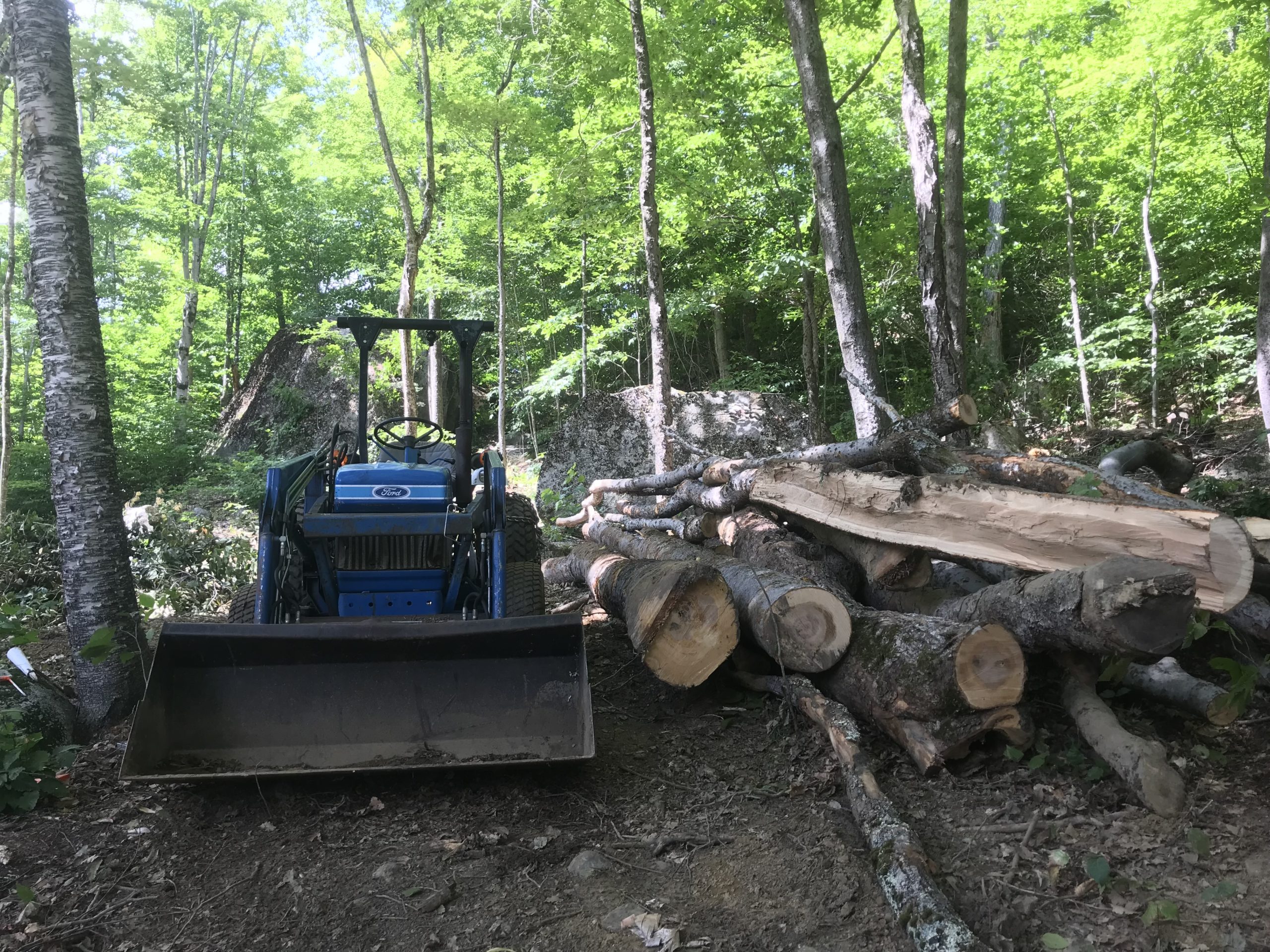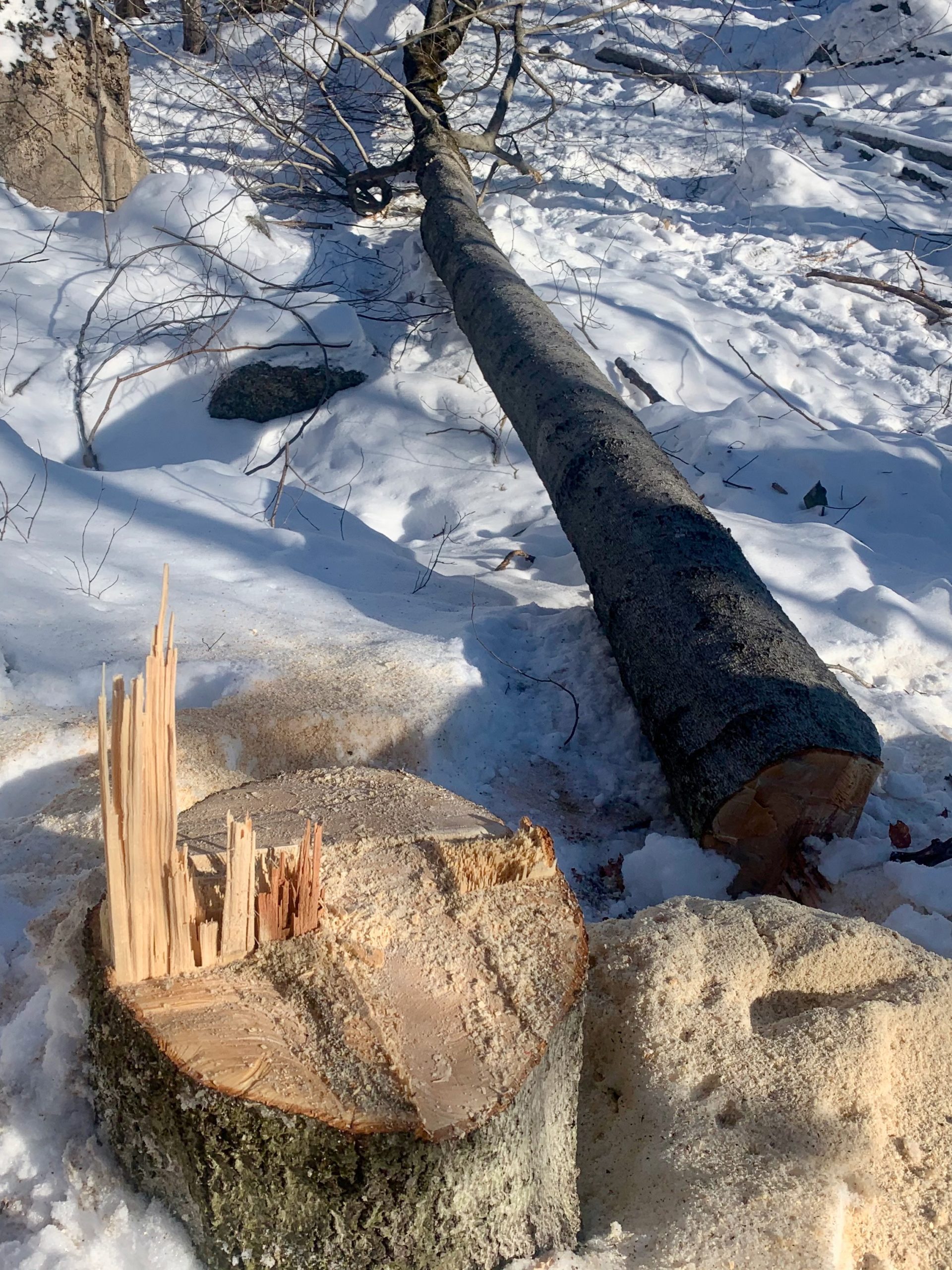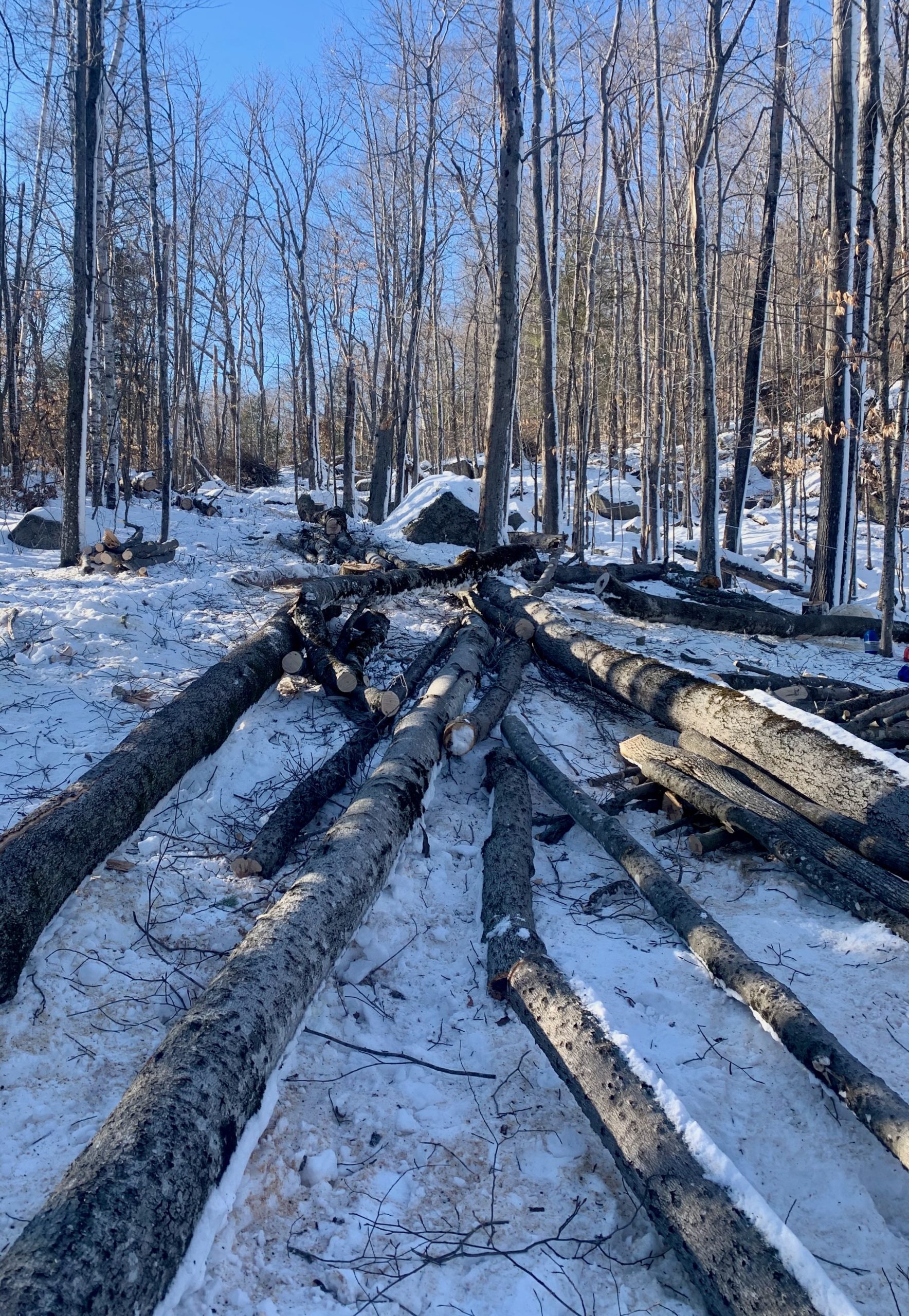Our farm began as a mountainside hardwood forest. The first tree I cut on the farm side of the road was a small beech with a U-shape bend in it— a perfect door handle for my woodshop door.
Five years later, I estimate that 99-percent of the trees we’ve cut have been beech. And not just because their whacky bends make nice door handles. They dominate our hill at the expense of other hardwoods, and the majority are diseased and as a result susceptible to failure. Fortunately, one other thing they are good for is firewood.
Beech trees are supposed to have steel-gray bark, smooth with only minor imperfections. Think of an elephant’s leg. Nowadays, model beech trees are few and far between. Most are covered in black scaly markings, the telltale sign of beech bark disease.
It’s a one-two punch — a tiny scale insect bores holes in the bark and a fungus marches in and infects the tree. These days, beeches in northern New England are all too likely to be small and stunted or to bear the ugly, puckered cankers that mark them as infected. Beech bark disease “causes significant mortality and defects in American beech,” write US Forest Service researchers David R. Houston and James T. O’Brien.
Northern Woodlands
In our woods, beech trees that snap mid trunk or shed large sprawling limbs, have damaged some of our best oaks and maples.

Sections of our woods are overrun by beech saplings. Sometimes only a few inches in diameter, but over 15 feet tall. The population is dense enough that it makes walking difficult, and blocks any light that would help promote other vegetation. Sporadically mixed in with these saplings are larger beech trunks, between a foot and two feet in diameter, but dead with the trunk snapped off 15 feet up.
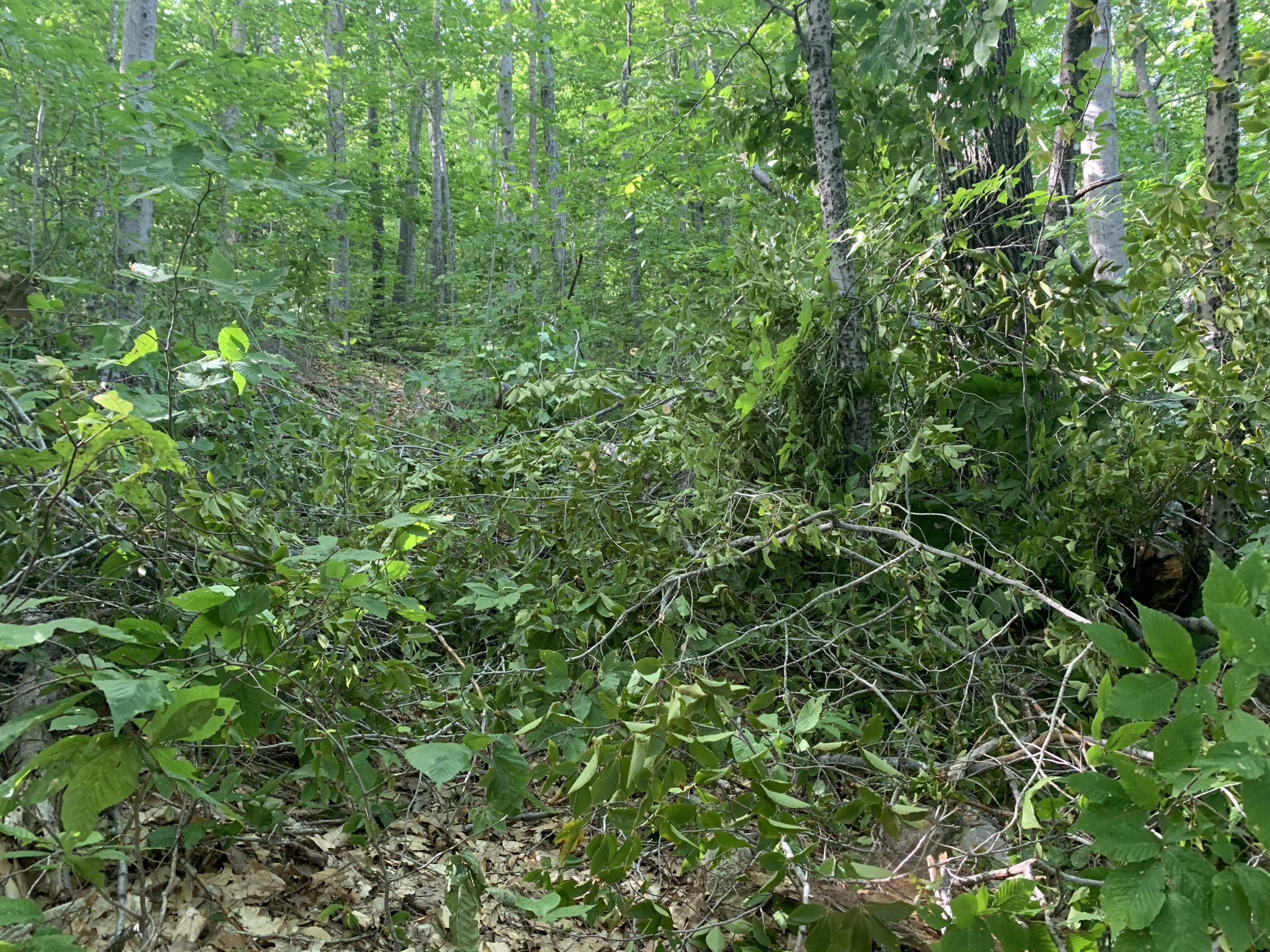
There is a good chance these young, dense beech stands were caused by partial thinning in the past.
Partial cutting of forest stands, where some trees are harvested and many are left standing, can perpetuate a monoculture of beech in the understory. Because beech is shade tolerant and sprouts proliferate from the roots, shade from the remaining trees creates perfect conditions for dense stands of beech sprouts.
UNH Extension
But it’s the beech bark disease itself that is doing the most to help the beech become overabundant.
It seems counterintuitive, but the proliferation of beech trees started with beech bark disease. When the disease kills a tree, the root system generates multiple new saplings. In turn, those young trees become diseased, die, and spawn yet more doomed saplings. For forest managers, the beech’s ability to regenerate presents a major problem: cutting a diseased tree only makes the problem worse. “That tree’s going to send up six, ten, maybe twelve new trees,” Weiskittel says. “It’s kind of like a whack-a-mole situation.”
DownEast Magazine
This is where the goats step in. Beech seedlings and foliage are known to be less than desirable browse for moose and deer who favor maple, oak, and birch. This is another reason for the beech trees’ recent dominance. At first, we noticed the goats having similar tastes, but they have eventually taken a liking to beech. As their tastes evolved they learned how to push the saplings down with their chests to better reach the crowns. It’s our hope that this acquired taste for the beech will help prevent new growth caused by the side effects of our partial clearing and the bark disease.
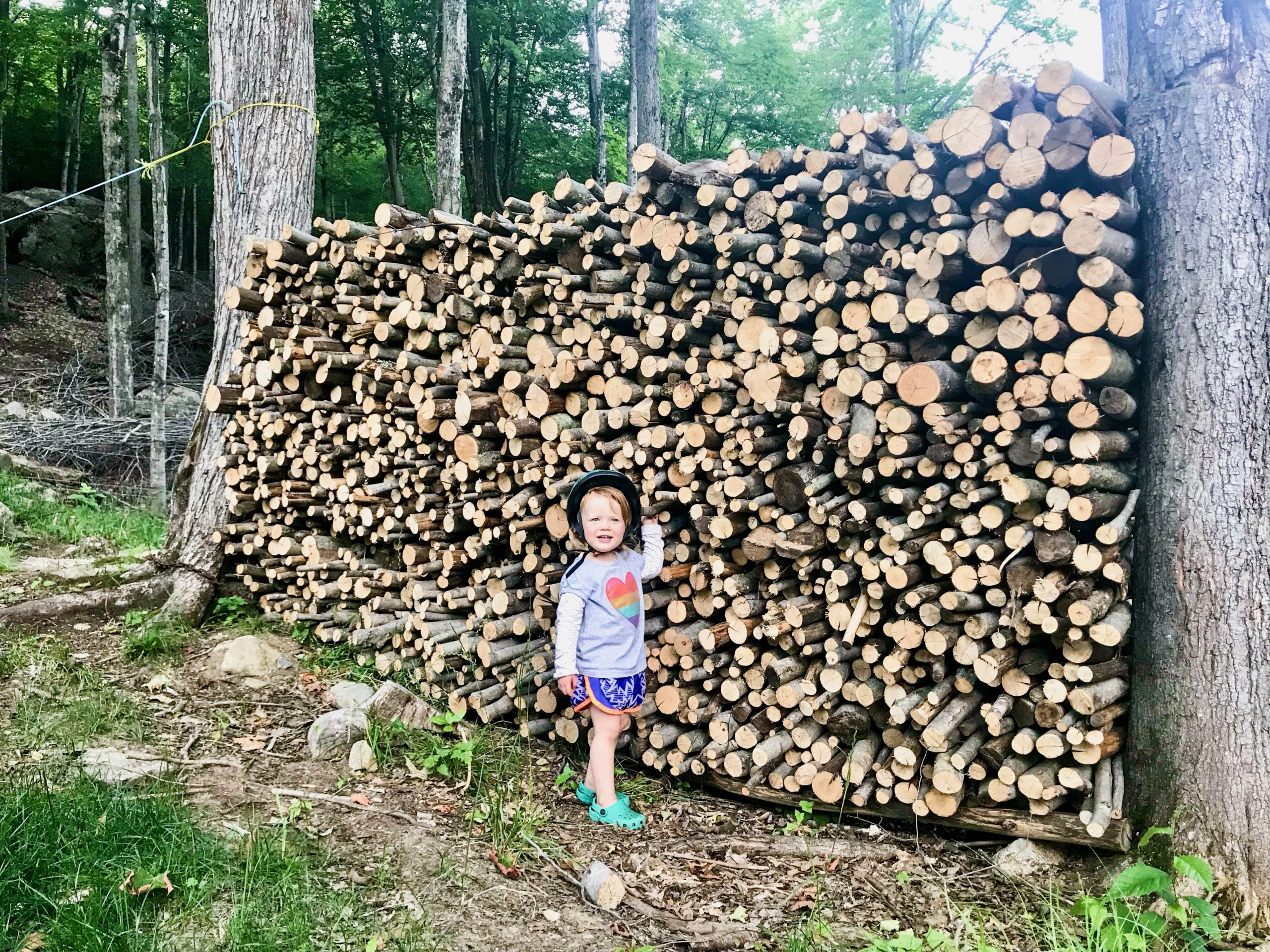
After clearing areas of beech or next step will be to replace what we’ve cut with other more desirable trees— we have 25 sugar maple seedlings coming from the state nursery this spring. The biggest challenge with his strategy will be keeping the goats away from the trees we want while having them help keep away the ones we don’t. It’s all the more reason we want to expand our woodland pastures, to spread out impact and allow us to manage the trees. Good thing we are professional fence installers (Future Blog Post).
This all segues neatly into what we’ve been up to lately. The lack of snow has made working in the woods easy this winter. We’ve long had a goal of creating better access to the far corners of our land, and what started as simple thinning around our maple lines in December has evolved into the start of a woods road project. Our southwest property line has the easiest grade, blue square as opposed to double diamond, and we’ve found a route that manages to weave its way around our largest boulders, which means we’ll need an excavator and not truckloads of TNT. Step 1. has been clearing the trees, which conveniently have all been beeches.
So on most weekend days, and some evenings after work, we’ll pack up a sled full of gear; chain saw, ax, felling wedges, bar oil, gas cans, dry kindling, a propane torch, etc. and cut trees, drag brush, and light burn piles. Ellie has been keeping herself entertained by bouncing on log “horses” and pretending to be ski patrol, rescuing injured skiers in the sled. It’s fun winter work that will warm you up fast even on the coldest days.
The new woods road, which we will hopefully make good progress on over the summer, will allow us to move the animals even further back on our land, helping us spread out their impacts and rotate their grazing more efficiently.
Back to the beech trees, it is worth noting that a small percentage of beech trees are disease resistant. They are easy to see in our woods as they stand out with smooth, scale-free bark. Another sign of useful beech is bear claw markings. Bears will return annually to the trees that produce the best crops of beechnuts, another positive aspect of the tree. High in protein and an important food source for wildlife, our goats and pigs seek them out in the fall.
All this being said, we aren’t foresters and unfortunately for us, we don’t own enough acreage to qualify for NRCS grant funds for forestry management. If we owned 10 or more acres (instead of 9.6), federal funds would be available for us to work with a forester, install woods roads, and make other forest improvements. We’ve tried multiple avenues to expand our acreage, but so far have come up empty. Until then, we will continue to do our own research, and adapt our strategies to improve our woods, while also providing room for our animals to browse on the forest’s bounty.
Sources:
DownEast Magazine – Beech Trees Are Killing Maine’s Forests
Real World Examples of Managing Beech
UMaine News – Warm Winters Bad for Beeches
